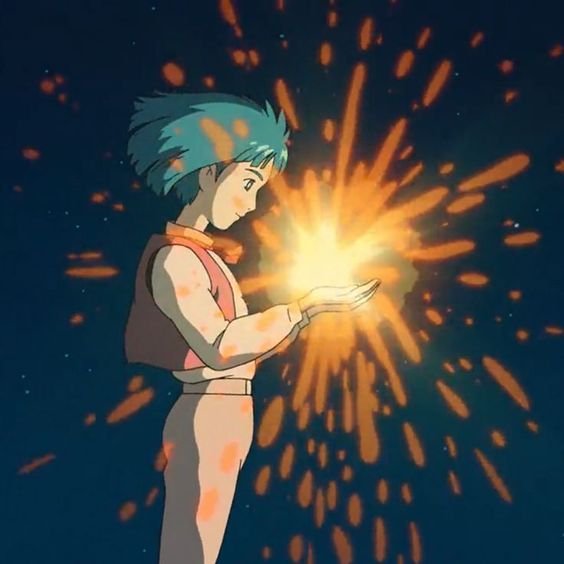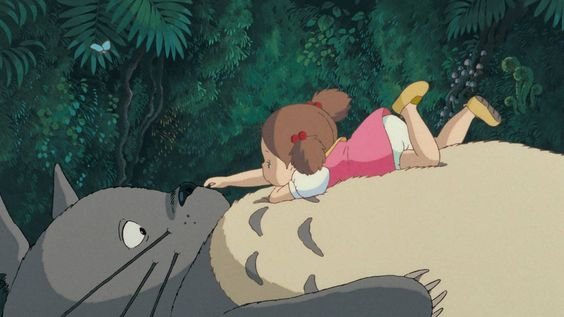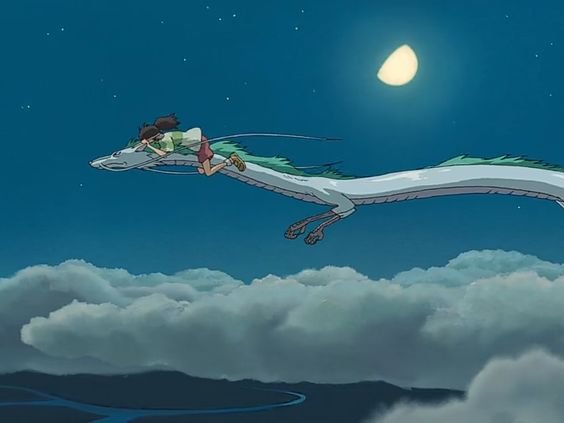The Studio Ghibli Effect
Image Courtesy: Strike Magazine Tallahassee
Last week, I watched The Boy and the Heron (2023) with eager anticipation for the signature whimsy of a Studio Ghibli film. I wasn’t disappointed; The Boy and the Heron is packed full of wild events like giant parakeets attacking the main character, Mahito, and the Warawara (small, blob-like creatures) flying into a starry sky to become human children. While watching the film, I found myself sucked into the fantasy world that Mahito travels through. Even as the heron grins with human teeth and shadow-people row boats across the ocean, I felt fully immersed in this world of fantasy. Afterward, one of my friends said he didn’t understand one scene of the movie. The rest of us tried to explain to him that you’re not really supposed to understand the movie; you’re just supposed to get wrapped up in the adventure alongside the main character.
As a kid, did you ever love a show or read a book solely because it transported you to a beautiful, whimsical world – even if you didn’t fully grasp the overarching themes or meaning? For example, I know that when I first read The Little Prince, I didn’t pick up on the societal critiques. I just enjoyed the world-building and magical characters. However, when I got older, I reread the book and annotated it with all the philosophical notes I could think of. I analyzed everything because as an adult, that’s how I’ve been taught to consume media. If I’m not analyzing and critiquing the characters, symbols, metaphors, and themes, then I feel like I’m not truly “enjoying” or “understanding” the content. I don’t often allow myself to drift into a world of whimsy just because it’s fun. Our society often critiques childlike “fun” as naïve, unproductive, or pointless.
But with its unapologetic whimsy and wonder, Studio Ghibli almost forces adult viewers to step back into a childlike mindset. Studio Ghibli, a Japanese animation studio co-founded by filmmaker Hayao Miyazaki, features over 20 films including Howl’s Moving Castle (2004), Spirited Away (2001), and My Neighbor Totoro (1988). The films are known for their beautiful world-building, likable child heroes, magical creatures (both good and evil), and a blurred line between fantasy and reality. While many people discovered Studio Ghibli in their childhood, I first watched a Ghibli film at 16 years old. In my high school film class, I was sucked into the fascinating world of Howl’s Moving Castle, and as I watched, I felt a change inside my mind. Even at 16, I had begun to view media through an adult, analytical lens. But while watching Howl, I forgot I was in a room with other high school students. I felt like I had entered Howl’s world. I experienced joy more from learning about the world than from analyzing “why” everything was the way it was. A talking fire? Amazing! A wizard turning to green slime? Awesome!
Studio Ghibli achieves a difficult feat: combining intelligent philosophical ideas with simple childlike wonder. Of course, if you dive into films like Howl, you can find symbolism and themes such as vanity and anti-war sentiments. However, these themes only add to the many layers of the movie; they can be explored if you so wish, but they aren’t so obvious that they take away from the viewing experience. I believe this balance between intelligence and pure wonder is the driving factor that draws in adult audiences. While many kid shows or movies today dumb down the subject matter in favor of slapstick jokes or immature suggestions, Studio Ghibli sheds light on the wisdom of childhood. Childlike observation does have a brilliance to it. Kids have a high intuition, often feeling scenarios rather than always logically analyzing. In the same way, you can pleasantly watch a Studio Ghibli film just by observing its beauty and feeling its wonder. Maybe, especially on the first watch, that’s the best way to do it.
One of my all-time favorite quotes, said by Hayao Miyazaki, is: “Yet even amidst the hatred and carnage, life is still worth living. It is possible for wondrous encounters and beautiful things to exist.” Another reason I believe Studio Ghibli films touch adult viewers is that they remind us what’s important in life. As a kid, you just instinctively know that beautiful things and wondrous encounters are important. Imagine a child going to a zoo, seeing a butterfly, or making a new friend. The child typically giggles and jumps around, filled with joy. As we get older and understand more of the world’s hardships, we lose that joy. If we see a butterfly, we might smile for a second, but we don’t linger on that “wondrous encounter.” However, when watching a movie like Spirited Away, we allow ourselves to marvel at the beauty of a white dragon, a soot sprite, or the iconic No-Face. In My Neighbor Totoro, we can imagine we too are standing in the rain next to a giant Totoro creature. For a moment, even as adults, we can reconnect with what’s important in life – things children just understand by instinct.
This is the Studio Ghibli effect: adults are able to reconnect with their “inner child” through the viewing experience. For a moment, the stressful, analytical life of adulthood vanishes in the wake of the marvelous, whether that takes the form of a smooth-talking wizard, a girl who rides wolves, a friendly dragon, or a toothy heron. From the first time I watched Sophie climb into Howl’s moving castle, to last week when I journeyed alongside Mahito and the heron, I’ve loved and treasured every immersive Studio Ghibli film.
Strike Out,
Writer: Ellie Amos
Editor: Blake N. Fiadino
Tallahassee





